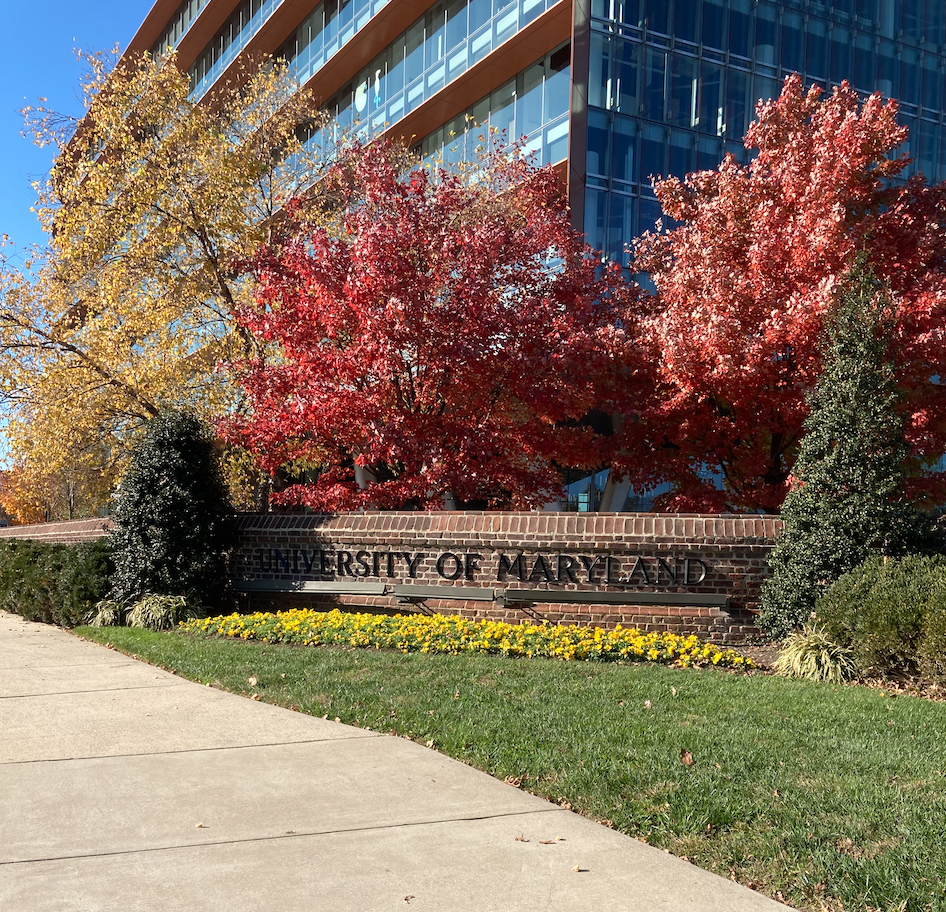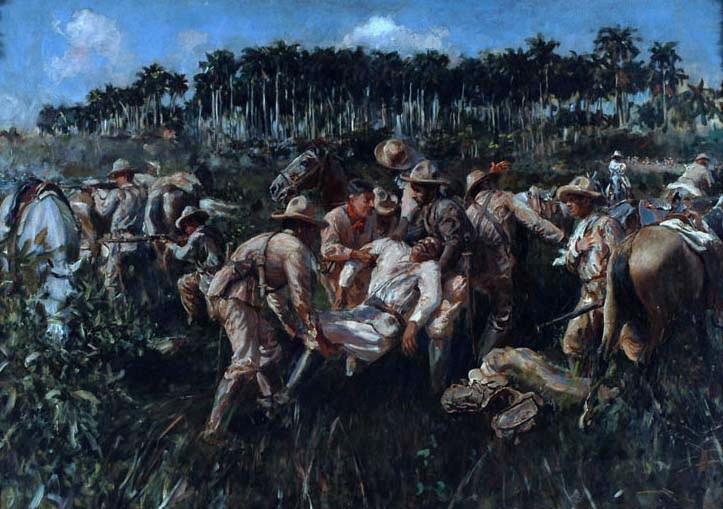|
Mario García Menocal
Aurelio Mario Gabriel Francisco García Menocal y Deop (December 17, 1866 – September 7, 1941) was the 3rd President of Cuba, serving from 1913 to 1921. His term as president saw Cuba's participation in the Allies in World War I. Early life and education Menocal was born on December 17, 1866, in Jagüey Grande, Matanzas, in Spanish Cuba. At 13-years-old, he was sent to boarding schools in the United States, where he attended Chappaqua Mountain Institute in Chappaqua, New York and then Maryland State College of Agriculture, which was later renamed the University of Maryland, College Park in College Park, Maryland. In 1884, he was accepted to Cornell University, where he graduated as civil engineer from the Cornell University College of Engineering in 1888. While at Cornell University, he was a member of the Delta Chi chapter of Delta Kappa Epsilon fraternity. Career As a young man, he was involved in the Cuban War of Independence, which sought Cuba's independence f ... [...More Info...] [...Related Items...] OR: [Wikipedia] [Google] [Baidu] |
President Of Cuba
The president of Cuba (), officially the president of the Republic of Cuba (), is the head of state of Cuba. The office in its current form was established under the Constitution of 2019. The President is the second-highest office in Cuba and the highest state office. Miguel Díaz-Canel became President of the Council of State on 19 April 2018, taking over from Raúl Castro, and has been President of Cuba since 10 October 2019. The First Secretary of the Communist Party of Cuba continues to be the highest-ranking political position in Cuba. Fidel Castro held the position from 1976 to 2011, and Raúl Castro from 2011 until the 8th Congress of the Communist Party of Cuba, held 16–19 April 2021, when he retired from office. History Under the 1901 constitution, Cuba had a presidential system based on that of the United States. In 1940, a new constitution reformed the government into a semi-presidential system. On 2 December 1976, the executive was reformed again by a new ... [...More Info...] [...Related Items...] OR: [Wikipedia] [Google] [Baidu] |
University Of Maryland, College Park
The University of Maryland, College Park (University of Maryland, UMD, or simply Maryland) is a public university, public Land-grant university, land-grant research university in College Park, Maryland, United States. Founded in 1856, UMD is the Flagship university, flagship institution of the University System of Maryland. It is known as the biggest university in the state of Maryland. UMD is the largest university in Maryland and the Washington metropolitan area. Its eleven schools and colleges offer over 200 degree-granting programs, including 113 undergraduate majors, 107 Master's degree, master's programs, and 83 Doctorate, doctoral programs. UMD's athletic teams are known as the Maryland Terrapins and compete in NCAA Division I as a member of the Big Ten Conference. A member of the Association of American Universities, The University of Maryland's proximity to Washington, D.C. has resulted in many research partnerships with the Federal government of the United States, ... [...More Info...] [...Related Items...] OR: [Wikipedia] [Google] [Baidu] |
William Elliot Gonzalez
William Elliott Gonzales (1866 – October 20, 1937) was the United States Ambassador to Cuba from 1913 to 1919 and the United States Ambassador to Peru from 1919 to 1921. He was born to Ambrosio José Gonzales and Harriott Rutledge Elliott. On February 2, 1887, he married Sarah C. Shiver; they had two children, Robert E. Gonzales (1888 – 1916) and Alida Ruffini Gonzales McMaster (1906 – 1938). He served in the U.S. Army during the Spanish–American War. Sometime between 1909 and 1912, Gonzales was the Editor of ''The State'' newspaper and used the paper's reach to help raise $11,000 in private subscriptions for the purposes of erecting the South Carolina Monument to the Women of the Confederacy. The South Carolina General Assembly appropriated another $7,500 for the monument. He was later the United States Ambassador to Cuba from 1913 to 1919. He was the United States Ambassador to Peru from 1919 to 1921. He died on October 20, 1937. He was buried in Elmwood Cemetery in ... [...More Info...] [...Related Items...] OR: [Wikipedia] [Google] [Baidu] |
1916 Cuban General Election
General elections were held in Cuba on 1 November 1916.Dieter Nohlen (2005) ''Elections in the Americas: A data handbook, Volume I'', p203 Mario García Menocal was re-elected in the presidential election, whilst the National Conservative Party and the Liberal Party both won 27 seats in the House of Representatives. Results Of the population of 2.6 million, only 796,636 – less than a third – were registered to vote. Of these 353,002 voted in the elections, a voter turnout of 44.31%. Office of the Historian Senate House of Representatives References {{Cuban elections |
Las Tunas Province
Las Tunas is one of the provinces of Cuba. Major towns include Puerto Padre, Amancio, and the capital city, Las Tunas (historically Victoria de Las Tunas). Climate and agriculture The southern coast, which opens onto the Gulf of Guacanayabo, is y and characterised by s. This wet area is used to grow |
Liberal Party Of Cuba
The Liberal Party of Cuba (), was one of the major political parties in Cuba from 1910 until the Cuban Revolution in the late 1950s, when it was exiled. History Liberal governments Founded as the Autonomist Liberal Party (, PLA), in 1878 and renamed in 1898, the party first contested elections in 1910, when it won 23 of the 41 seats in mid-term elections. They lost the 1912 elections to the Conjunción Patriótica alliance, and went on to finish second in elections in 1914, 1916 (in which they won the same number of seats in the House of Representatives as the National Conservative Party, but won fewer seats in the Senate) and 1918.Nohlen, pp209-217 In the 1920 elections, the Liberal Party's Alfredo Zayas y Alfonso won the presidential election, although the party lost the parliamentary elections to the National League. They went on to win the mid-term elections in 1922. For the 1924 elections the party formed an alliance with the Cuban Popular Party. The alliance's Gerard ... [...More Info...] [...Related Items...] OR: [Wikipedia] [Google] [Baidu] |
National Conservative Party (Cuba)
The National Conservative Party ( PCN) was a political party in Cuba Cuba, officially the Republic of Cuba, is an island country, comprising the island of Cuba (largest island), Isla de la Juventud, and List of islands of Cuba, 4,195 islands, islets and cays surrounding the main island. It is located where the .... Between 1908 and 1932, the party participated in the national elections; in the 1932 Cuban parliamentary election, the party won 25 of 69 seats. References Conservatism in Cuba Defunct political parties in Cuba Conservative parties in North America Political parties disestablished in 1932 {{Cuba-party-stub ... [...More Info...] [...Related Items...] OR: [Wikipedia] [Google] [Baidu] |
Conservatism
Conservatism is a Philosophy of culture, cultural, Social philosophy, social, and political philosophy and ideology that seeks to promote and preserve traditional institutions, Convention (norm), customs, and Value (ethics and social sciences), values. The central tenets of conservatism may vary in relation to the culture and civilization in which it appears. In Western culture, depending on the particular nation, conservatives seek to promote and preserve a range of institutions, such as the nuclear family, organized religion, the military, the nation-state, property rights, rule of law, aristocracy, and monarchy. Conservatives tend to favor institutions and practices that enhance social order and historical continuity. The 18th-century Anglo-Irish statesman Edmund Burke, who opposed the French Revolution but supported the American Revolution, is credited as one of the forefathers of conservative thought in the 1790s along with Savoyard statesman Joseph de Maistre. The first ... [...More Info...] [...Related Items...] OR: [Wikipedia] [Google] [Baidu] |
Spanish–American War
The Spanish–American War (April 21 – August 13, 1898) was fought between Restoration (Spain), Spain and the United States in 1898. It began with the sinking of the USS Maine (1889), USS ''Maine'' in Havana Harbor in Cuba, and resulted in the U.S. acquiring sovereignty over Puerto Rico, Guam, and the Philippines, and establishing a protectorate over Cuba. It represented U.S. intervention in the Cuban War of Independence and Philippine Revolution, with the latter later leading to the Philippine–American War. The Spanish–American War brought an end to almost four centuries of Spanish presence in the Americas, Asia, and the Pacific; the United States meanwhile not only became a major world power, but also gained several island possessions spanning the globe, which provoked rancorous debate over the wisdom of expansionism. The 19th century represented a clear decline for the Spanish Empire, while the United States went from a newly founded country to a rising power. In 1895, C ... [...More Info...] [...Related Items...] OR: [Wikipedia] [Google] [Baidu] |
Spain
Spain, or the Kingdom of Spain, is a country in Southern Europe, Southern and Western Europe with territories in North Africa. Featuring the Punta de Tarifa, southernmost point of continental Europe, it is the largest country in Southern Europe and the fourth-most populous European Union member state. Spanning across the majority of the Iberian Peninsula, its territory also includes the Canary Islands, in the Eastern Atlantic Ocean, the Balearic Islands, in the Western Mediterranean Sea, and the Autonomous communities of Spain#Autonomous cities, autonomous cities of Ceuta and Melilla, in mainland Africa. Peninsular Spain is bordered to the north by France, Andorra, and the Bay of Biscay; to the east and south by the Mediterranean Sea and Gibraltar; and to the west by Portugal and the Atlantic Ocean. Spain's capital and List of largest cities in Spain, largest city is Madrid, and other major List of metropolitan areas in Spain, urban areas include Barcelona, Valencia, Seville, ... [...More Info...] [...Related Items...] OR: [Wikipedia] [Google] [Baidu] |
Cuban War Of Independence
The Cuban War of Independence (), also known in Cuba as the Necessary War (), fought from 1895 to 1898, was the last of three liberation wars that Cuba fought against Spain, the other two being the Ten Years' War (1868–1878) and the Little War (1879–1880). During the war, Spain sent 220,285 soldiers to Cuba—according to the Library of Congress, the largest army to cross the Atlantic until World War II. The final three months of the conflict escalated to become the Spanish–American War, with United States forces being deployed in Cuba, Puerto Rico, and the Philippines against Spain. Historians disagree as to the extent that United States officials were motivated to intervene for humanitarian reasons but agree that yellow journalism exaggerated atrocities attributed to Spanish forces against Cuban civilians. Background During the years 1879–1888 of the so-called "Rewarding Truce", lasting for 17 years from the end of the Ten Years' War in 1878, there were fundament ... [...More Info...] [...Related Items...] OR: [Wikipedia] [Google] [Baidu] |



